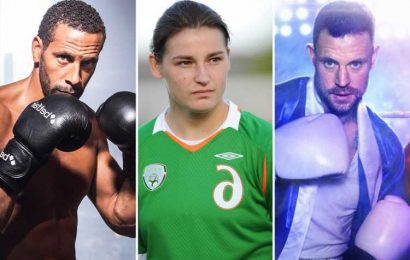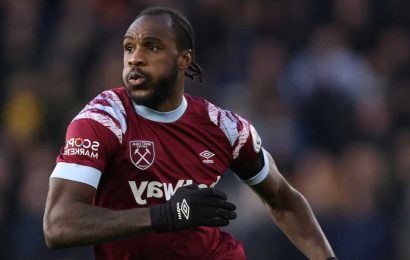The traditional first step in preparing for fantasy drafts involves assembling projections and rankings, which are based primarily on the previous year. Unfortunately, the 2020 season gave us the smallest sample of games in Major League Baseball history, so basing anything on just 60 games’ worth of data can be a recipe for disaster.
Then again, we can’t just pretend that last season never happened, either. Players get older, skills erode and prospects might not develop as rapidly as they would have otherwise.
So what can we do? First, we can look for trends we expect to continue – such as starting pitchers throwing fewer innings and more relievers getting wins and saves. As a result, the top starters and closers are being pushed up even higher on draft boards as they become more scarce.
In addition, stolen bases remain on the decline, forcing fantasy managers to map out a predraft strategy to address steals or risk getting caught empty-handed.
Dodgers outfielder Mookie Betts is one of the top-ranked players for 2021 in USA TODAY Sports Weekly's annual Fantasy Extra issue. (Photo: USA TODAY Sports Weekly)
Going retro
If there was any silver lining to last year’s strange April to July period of baseball inactivity, it was the retro draft. Fantasy sports Hall of Famer Ron Shandler popularized the concept of taking past seasons – with the stats already known beforehand – and competing to build the best fantasy team using standard 5×5 Rotisserie scoring.
It’s simple, it’s fun and the results can be calculated instantly. One theme that emerged from those drafts was that sacrificing a single statistical category can make the other categories considerably stronger. More often than not, the teams that finished atop the standings frequently ended up punting one of the 10 categories, usually stolen bases or saves.
Could the strategy work just as well without the benefit of hindsight? It’s a question worth considering. With so much uncertainty heading into the 2021 season, why not lean heavily on the things we feel most certain about? That was the logic I used this year in AL LABR: What if I ignored batting average entirely?
The 2021 #LABR drafts are officially in the books! Here are the full grids, with recaps from @SteveAGardner:
Mixed: https://t.co/FmBmZ40aVX
NL: https://t.co/qugiSlR7ZH
NL recap: https://t.co/cuhNiQMqjk
AL: https://t.co/2zIYX3osoq
AL recap: https://t.co/AY3Vs2ijNP
It didn’t hurt that the AL player pool has a wealth of relatively low-average hitters who are adept at stealing bases or blasting home runs. Not having to worry about protecting my team’s average made it much easier to narrow down the hitters I wanted to target. And once I landed 2020 steals champion Adalberto Mondesi, it was all about power (since each homer also guarantees a run and an RBI).
Unlike in the retro drafts, I’ll have to wait until the season ends to find out if my strategy worked. But with so many variables in play, it was far less stressful having fewer of them to worry about.
Jack Flaherty and other pitchers whose ERAs were inflated by home runs last season could be finds when you consider the effect modified baseballs will have. (Photo: Jasen Vinlove, USA TODAY Sports)
New balls please
MLB has said the baseballs this season will be modified slightly so they don’t fly as far as they have in previous years.
While it might only result in the loss of a foot or two on balls hit to the outfield, initial estimates say the reduced distance could reduce home run rates by about 5%, a significant figure following two seasons with the highest home run rates in baseball history.
Sluggers who hit no-doubt home runs (Marcell Ozuna and Fernando Tatis Jr. led the way in 2020) won’t notice the changes, but those whose fly balls barely clear the wall will take a hit. Statcast data can help identify those players (Max Muncy, Mark Canha, Mookie Betts and Michael Brantley were especially fortunate in the shortened season) and we can adjust our draft sheets accordingly.
Conversely, if the ball isn’t flying as far, pitchers whose 2020 ERAs were inflated because they gave up so many homers could become much more valuable this season. An easy stat to check is xFIP, which normalizes a pitcher’s home run rate to the league average and calculates an equivalent ERA.
Jack Flaherty (4.91 ERA, 3.42 xFIP), Tyler Glasnow (4.08, 2.75) and Frankie Montas (5.60, 4.36) all averaged more than 10 strikeouts and 1.33 home runs per nine innings last season. A little home run regression, and their value rises considerably. Blake Snell, Jesus Luzardo and Chris Paddack don’t quite reach both benchmarks but fall into the same category.
If we dig deep enough into last year’s high-K, high-HR pitchers we might find some potential diamonds in the rough. For example, Steven Matz (9.68 ERA) allowed an MLB-worst 4.11 homers per nine innings, but his xFIP was 4.15. Michael Wacha (6.62, 4.30), Matthew Boyd (6.71, 4.97) and Jordan Montgomery (5.11, 3.65) also look much better with normal home run rates – as do Tarik Skubal, Mike Minor, Luke Weaver, Danny Duffy and Nathan Eovaldi.
FANTASY RANKINGS:Top 200 overall players for 2021
Scratch pad all-stars
In closing, here’s an annual tradition I first used to keep me from panicking during the late rounds of my drafts. When everyone’s looking for players with upside, having a list of under-the-radar targets can help tremendously.
Generally, these are players ranked outside the top 200 overall who can help in certain statistical categories or provide unexpected value. So keep a list of your favorites on a scratch pad somewhere and use it as your secret weapon.
Speed: Jon Berti, Garrett Hampson, Jonathan Villar, Leody Taveras, Christian Pache, Manuel Margot, Roman Quinn, Myles Straw.
Potential impact hitters: Andrew Vaughn, Ty France, J.D. Davis, Jesse Winker, Alex Kirilloff, Mitch Haniger, Willie Calhoun.
Late power sources: Miguel Sano, Christian Walker, C.J. Cron, Austin Riley, Kyle Schwarber, Kole Calhoun, Adam Duvall, Hunter Renfroe, Jorge Soler.
Potential bargain pitchers: Yusei Kikuchi, Michael Pineda, Kwang-Hyun Kim, Griffin Canning, Freddy Peralta, Matt Shoemaker, Tanner Houck, Domingo German.
Potential closers in waiting: Jordan Romano, Jake Diekman, Tanner Rainey, Lucas Sims.
Injury discount: Mitch Haniger, Kole Calhoun, Eduardo Rodriguez, Chris Sale, Noah Syndergaard, Luis Severino.
Follow Gardner on Twitter @SteveAGardner
Source: Read Full Article









